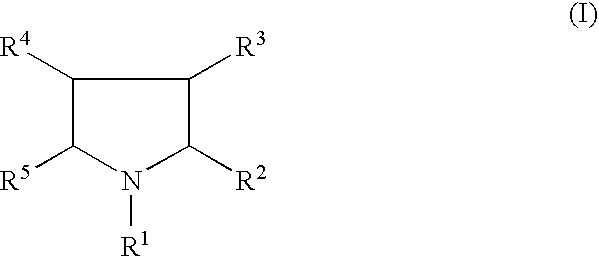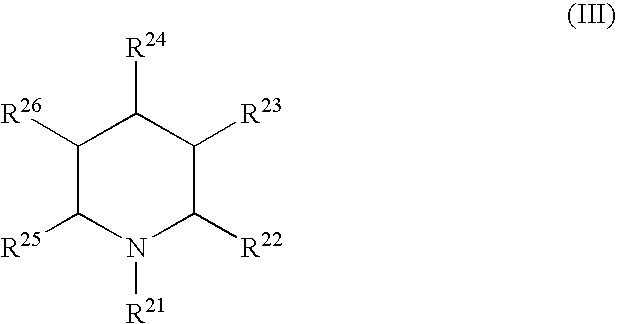Use of glycogen phosphorylase inhibitors for treatment of cardiovascular diseases
a technology of glycogen phosphorylase and inhibitors, which is applied in the direction of biocide, plant growth regulators, animal husbandry, etc., can solve problems such as arrhythmias, and achieve the effect of effective us
- Summary
- Abstract
- Description
- Claims
- Application Information
AI Technical Summary
Benefits of technology
Problems solved by technology
Method used
Image
Examples
example 1
Functional Characterisation of Glycogen Phosphorylase Inhibitors
Fosgerau et al, Kinetic and functional characterization of 1,4-dideoxy-1,4-imino-D-arabinitol. A potent inhibitor of glycogen phosphorylase with anti-hyperglyceamic effect in ob / ob mice, Archives of Biochemistry and Biophysics 380, 274-284 (2000), which is hereby incorporated in its entirety by reference, describes assays for determination of whether a given compound is a glycogen phosphorylase inhibitor.
Results:
Rabbit and rat heart glycogen phosphorylase was inhibited by (2R,3R,4R)-3,4dihydroxy-2-hydroxymethylpyrrolidine with an IC50 of 220 nM in the direction of glycogen breakdown.
example 2
Effect on Ischemia Induced Arrhythmia in the Isolated Perfused Rabbit Heart
The model evaluates the effect of a test compound on ischemia induced arrhythmia in isolated perfused rabbit hearts.
Method:
The hearts were excised from rabbits and perfused via an aortic canula in a Langendorff set-up equipped with ECG and MAP electrodes. Global normotherm ischemia was induced by turning off the perfusion for 30 min. After 30 min the heart was reperfused and the total duration of arrhythmia was determined. Furthermore, ECG and surface mono-phasic action potentials (MAPs) were scored to describe the severity of ischemic damage.
Results:
0.4 μg / ml (2R,3R,4R)-3,4dihydroxy-2-hydroxymethylpyrrolidine reduced the average arrhythmia length following reperfusion from 18.0±5.6 to 0.0±0.0 minutes, (n=7). ECG score was reduced from 2.4±0.2 to 0.7±0.3 (n=7) and MAP score from 2.3±0.3 to 0.9±0.1 (n=7)
example 3
Evaluation of Cardioprotective Effect in the Anaesthetised Rabbit Model of Myocardial Infarction Induced by Transient Coronary Artery Occlusion
Method: Rabbits were anaesthetized and mechanically ventilated with oxygen enriched air. A thoracotomy was performed and an infarct was produced by ligating the left coronary artery for 30 min. After 30 min. the heart was reperfused for 2 hours. The heart was excited and reperfused in Langendorff mode. The coronary artery was reoccluded and the heart was perfused with ink to delineate the area at risk. The heart was removed and cut into 2 mm slices and stained with triphenyl tetrazolium chloride. The area at risk and the infarct size was determined by planimetry.
Results:
10 mg / kg b.i.d. (2R,3R,4R)-3,4dihydroxy-2-hydroxymethylpyrrolidine reduced the infarct size with 45% when compared to untreated rabbits.
PUM
| Property | Measurement | Unit |
|---|---|---|
| Cell angle | aaaaa | aaaaa |
| Selectivity | aaaaa | aaaaa |
Abstract
Description
Claims
Application Information
 Login to View More
Login to View More - R&D
- Intellectual Property
- Life Sciences
- Materials
- Tech Scout
- Unparalleled Data Quality
- Higher Quality Content
- 60% Fewer Hallucinations
Browse by: Latest US Patents, China's latest patents, Technical Efficacy Thesaurus, Application Domain, Technology Topic, Popular Technical Reports.
© 2025 PatSnap. All rights reserved.Legal|Privacy policy|Modern Slavery Act Transparency Statement|Sitemap|About US| Contact US: help@patsnap.com



